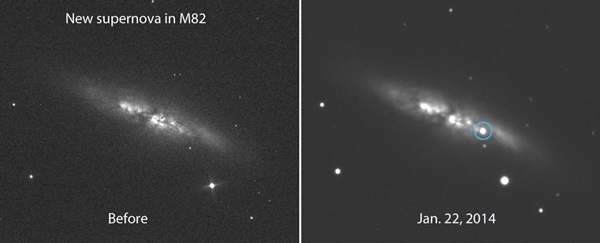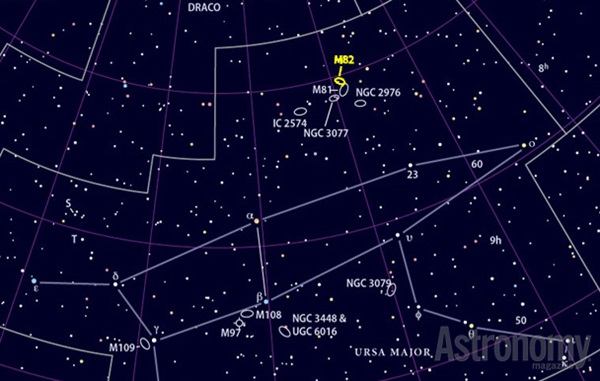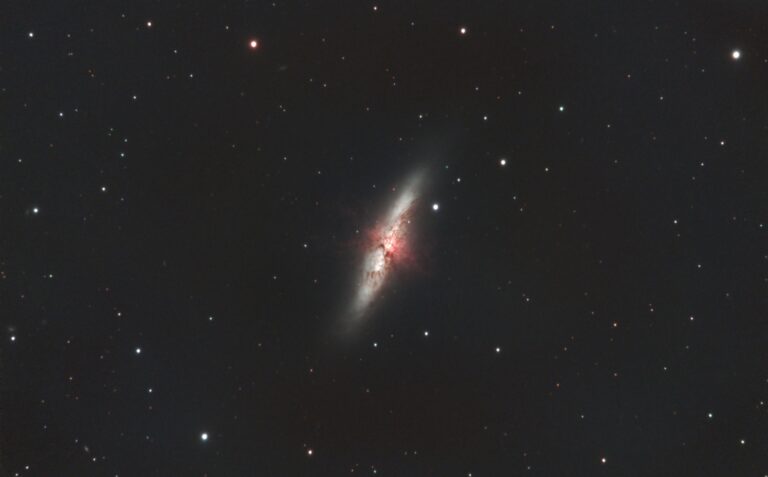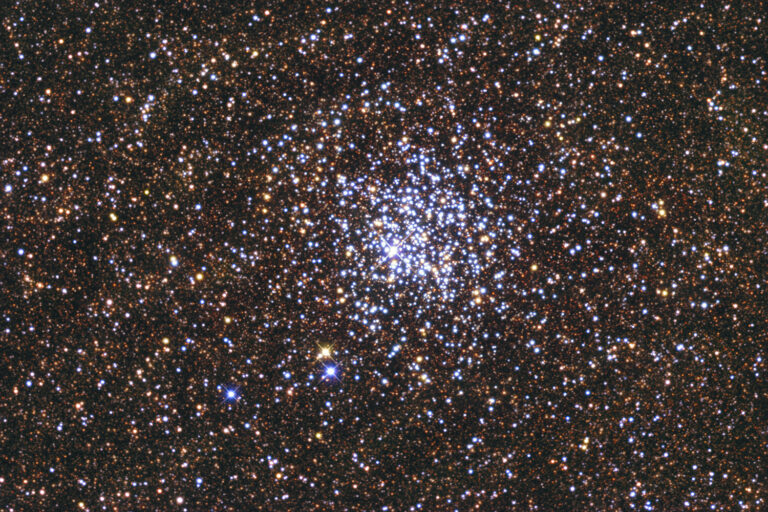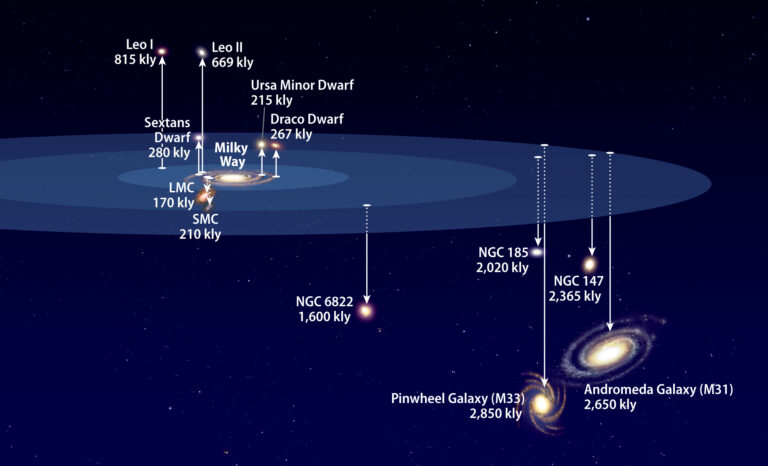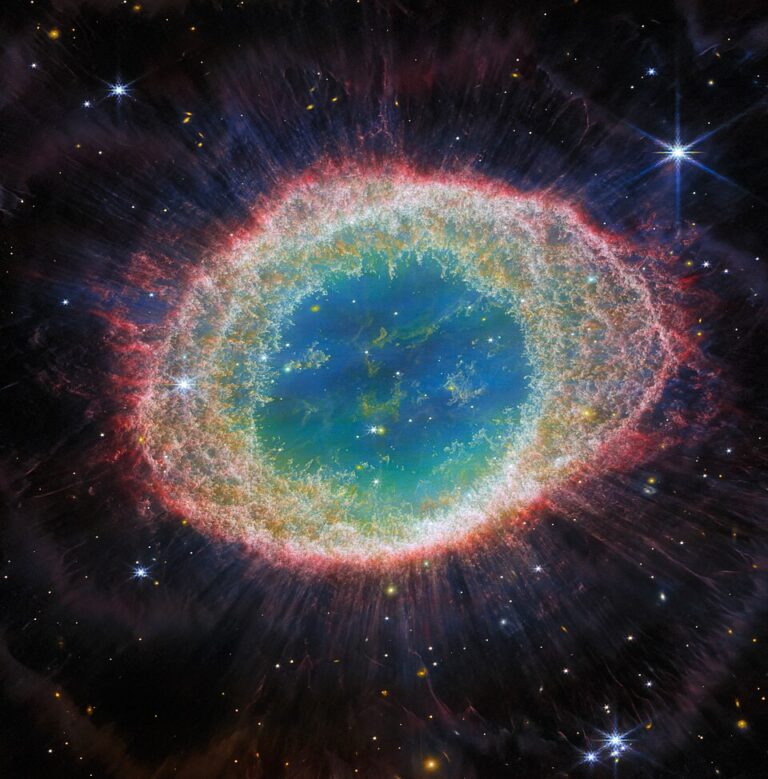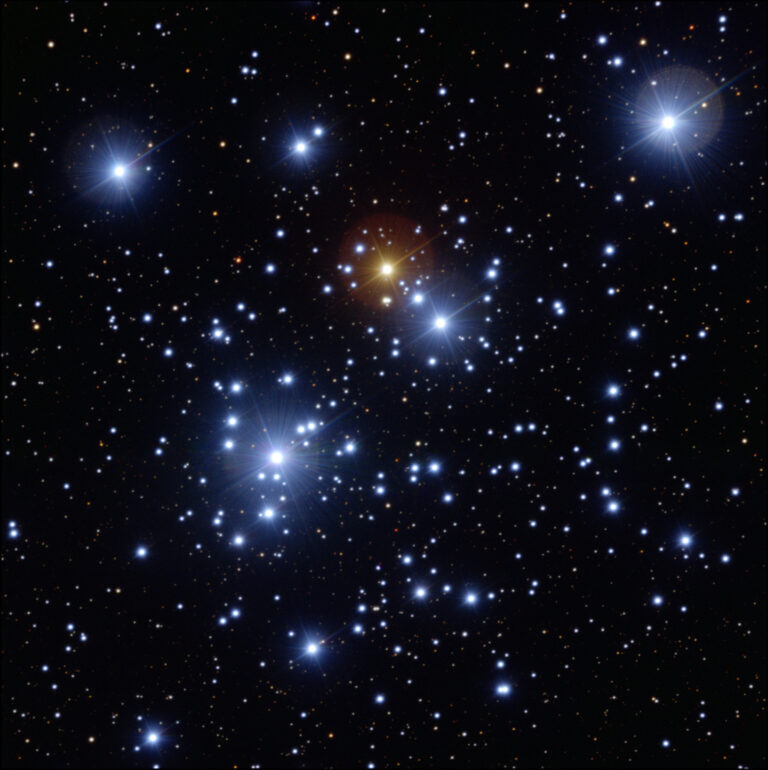Key Takeaways:
Astronomers are saying this new supernova is currently at magnitude +11 to +12, so its definitely not visible with the naked eye. You’ll need a 4-inch telescope at least to be able to see it. That said, at 12 million light-years away, this is (at the moment) the brightest, closest supernova since SN 1993 J kaboomed in neighboring galaxy M81 21 years ago. M81 and M82, along with NGC 3077, form a close-knit interacting group.
M82 is a popular target for beginning and amateur astronomers; pre-discovery observations show it had already brightened to magnitude 13.9 on the 16th, 13.3 on the 17th, and 12.2 on the 19th.
M82 is a bright, striking edge-on spiral galaxy bright enough to see in binoculars. Known as the Cigar or Starburst Galaxy because of its shape and a large, active starburst region in its core, it’s only 12 million light-years from Earth and home to two previous supernovae in 2004 and 2008. Neither of those came anywhere close to the being as bright as the discovery, and it’s very possible the new object will become brighter yet.
PSN J09554214+6940260 is a type Ia supernova, a dry term describing one of the most catastrophic events in the universe. Here a superdense white dwarf, a star only about the size of Earth but with the gravitational power of a Sun-sized star, pulls hydrogen gas from a nearby companion down to its surface where it adds to the star’s weight.
When the dwarf packs enough pounds to reach a mass 1.4 times that of the Sun, it can no longer support itself. The star suddenly collapses, heats to incredible temperatures, and burns up explosively in a runaway fusion reaction. What we see here on Earth is the sudden appearance of a brand new star within the galaxy’s disk. Of course, it’s not really a new star, but rather the end of an aged one.
I know you’re as excited as I am to get a look at this spectacular new star the next clear night. The best time to see the supernova is as soon as the sky gets dark when it’s already up in the northeastern sky above the Dipper Bowl, but since it’s circumpolar for mid-latitude observers, you can check it out any time of night.
Good luck and enjoy watching one of the biggest show of fireworks the universe has to offer. We’ll keep you posted with the latest updates at Universe Today. For more photos and additional information, please see David Bishop’s excellent Latest Supernovae site. You can read more about the followup work by the Remanzacco Observatory team here.
See more coverage from Bob King at www.universetoday.com.

